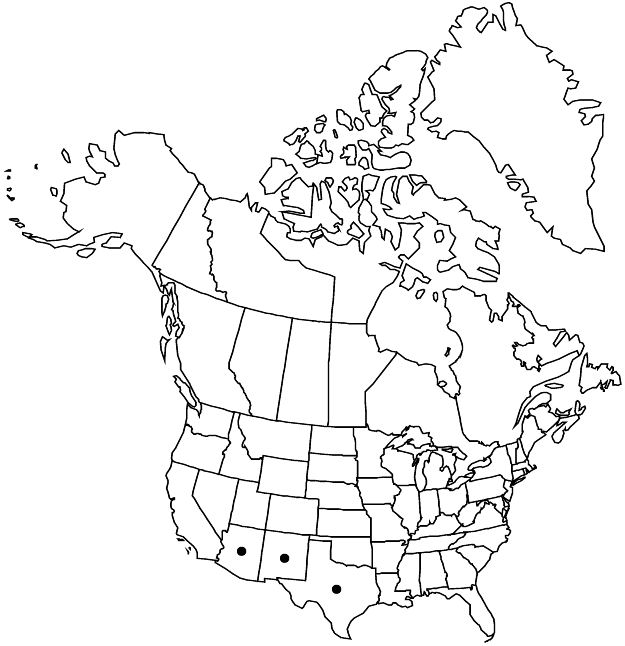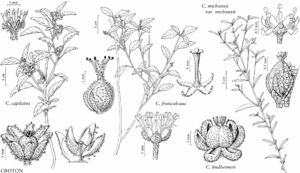Croton fruticulosus
Rep. U.S. Mex. Bound. 2(1): 194. 1859.
Shrubs, 2–10 dm, monoecious. Stems much branched distally, stellate-hairy. Leaves not clustered; stipules rudimentary or absent; petiole 0.4–1 (–1.5) cm, 1/8–1/5 blade length, glands absent at apex; blade ovate to ovatelanceolate, 2–8 × 2–4 cm, base truncate to cordate, margins serrulate, often slightly undulate, apex attenuate, acute, abaxial surface pale green, stellate-hairy, adaxial surface darker green, puberulent. Inflorescences bisexual, racemes, 3–12 cm, staminate flowers 10–20, pistillate flowers 2–5. Pedicels: staminate 2.5–4 mm, pistillate 0–0.5 mm. Staminate flowers: sepals 5, 0.8–1.2 mm, abaxial surface stellate-tomentose; petals 5, oblanceolate to spatulate, 2 mm, abaxial surface glabrous except margins densely fimbrillate-villous; stamens 9–16. Pistillate flowers: sepals 5, equal, 2.2 mm, margins entire, apex incurved, abaxial surface stellate-hairy; petals 0; ovary 3-locular; styles 3, 3–4.5 mm, 2-fid to base, terminal segments 6. Capsules 5–6 mm diam., smooth; columella apex with 3 rounded, inflated lobes. Seeds 4–5 × 3.2–3.8 mm, shiny.
Phenology: Flowering May–Dec.
Habitat: Limestone or basalt hills.
Elevation: 100–1700 m.
Distribution

Ariz., N.Mex., Tex., Mexico (Chihuahua), Mexico (Coahuila), Mexico (Nuevo León), Mexico (San Luis Potosí), Mexico (Tamaulipas)
Discussion
Croton fruticulosus is known in the flora area from southeastern Arizona through southern New Mexico and trans-Pecos Texas to the Edwards Plateau.
Selected References
None.
Lower Taxa
"connate" is not a number. "distinct" is not a number.
